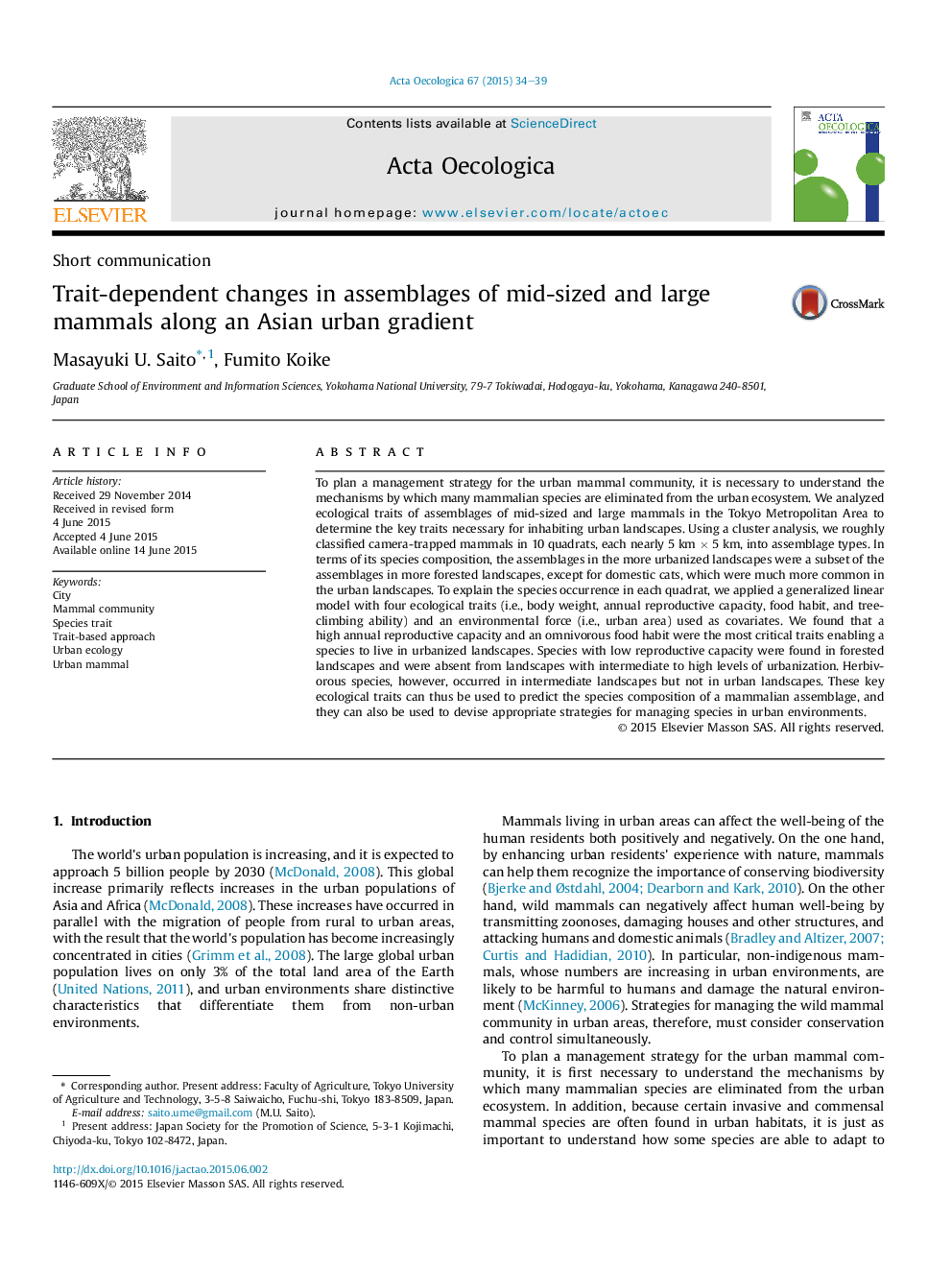| کد مقاله | کد نشریه | سال انتشار | مقاله انگلیسی | نسخه تمام متن |
|---|---|---|---|---|
| 4380822 | 1617705 | 2015 | 6 صفحه PDF | دانلود رایگان |
• Ecological traits of mammal assemblages in the Tokyo Metropolitan Area were analyzed.
• Species composition in urban landscape was the subset of assemblage in forested area.
• Species with low reproductive capacity occurred only in forested area.
• Herbivores occurred in forested and intermediate areas but not in urban area.
• Our findings can be used to strategies for managing species in urban environments.
To plan a management strategy for the urban mammal community, it is necessary to understand the mechanisms by which many mammalian species are eliminated from the urban ecosystem. We analyzed ecological traits of assemblages of mid-sized and large mammals in the Tokyo Metropolitan Area to determine the key traits necessary for inhabiting urban landscapes. Using a cluster analysis, we roughly classified camera-trapped mammals in 10 quadrats, each nearly 5 km × 5 km, into assemblage types. In terms of its species composition, the assemblages in the more urbanized landscapes were a subset of the assemblages in more forested landscapes, except for domestic cats, which were much more common in the urban landscapes. To explain the species occurrence in each quadrat, we applied a generalized linear model with four ecological traits (i.e., body weight, annual reproductive capacity, food habit, and tree-climbing ability) and an environmental force (i.e., urban area) used as covariates. We found that a high annual reproductive capacity and an omnivorous food habit were the most critical traits enabling a species to live in urbanized landscapes. Species with low reproductive capacity were found in forested landscapes and were absent from landscapes with intermediate to high levels of urbanization. Herbivorous species, however, occurred in intermediate landscapes but not in urban landscapes. These key ecological traits can thus be used to predict the species composition of a mammalian assemblage, and they can also be used to devise appropriate strategies for managing species in urban environments.
Journal: Acta Oecologica - Volume 67, August 2015, Pages 34–39
